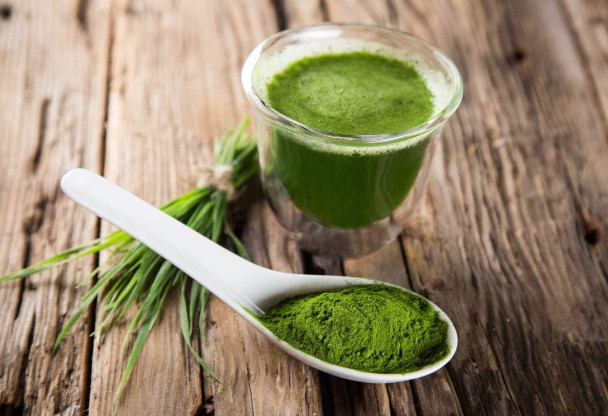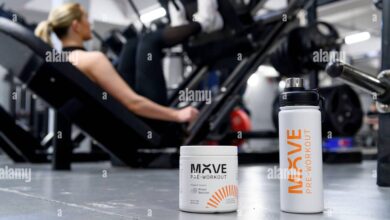
What is Spirulina?
Spirulina, named after its spiral shape, is a microscopic blue-green cyanobacterium that has been thriving in the alkaline lakes of warm regions for over 3 billion years. This remarkable algae is a rich source of macronutrients (proteins, carbohydrates, fats) and micronutrients (vitamins, minerals, trace elements, amino acids, polyunsaturated fatty acids). Known as a “superfood,” spirulina offers a plethora of health benefits, including antioxidant properties, immune system support, and weight management assistance.
Definition of Spirulina
Spirulina is a true prokaryotic cyanobacterium, often referred to as a blue-green microalgae. Its name derives from the Latin word “spira,” meaning spiral, which describes the helical shape of its filaments. These filaments spiral only in favorable environments such as liquids or culture media. Spirulina belongs to the Arthrospira genus, distinct from the distant Spirulina genus, often confused due to the microscopic appearance of their spiraling filaments.
The History of Spirulina
Ancient Uses
The use of spirulina dates back to antiquity. Ancient Aztecs dried it for use as flour in tortillas, bread, and cakes. In the 15th century, the Kanembou people of Chad filtered spirulina from Lake Chad, mixing it with millet to create sustenance during famines. However, the 16th-century conquistadors drained these lakes, leading to the algae’s disappearance until its rediscovery in the 19th century.
Modern Revival
In 1827, French botanist Turpin isolated spirulina from freshwater samples, and by the 20th century, its cultivation began as a nutritional supplement to combat global hunger. In 1974, the United Nations declared spirulina “the best food for the future.” Today, spirulina is cultivated worldwide, primarily in China, and recognized for its nutritional and therapeutic potential.
The Appearance of Spirulina
Under a microscope, spirulina appears as 50-500 µm long and 3-4 µm wide blue-green filaments. This cyanobacterium reproduces vegetatively through simple fission and thrives in warm, nutrient-rich, alkaline waters. Spirulina’s growth rate is impressive, doubling in quantity every four days under optimal conditions. Rich in proteins, it transforms into a sweet taste when exposed to heat due to protein-to-sugar conversion.
Composition
Spirulina’s composition varies depending on cultivation and processing methods. Generally, it contains:
- 70% proteins
- 20% carbohydrates
- 5% fats
- 7% minerals
- 3-6% water
While it lacks vitamin C, iodine, and omega-3, spirulina is an exceptional source of beta-carotene, phycocyanin, chlorophyll, and highly absorbable iron, making it invaluable for nutrition.
Health Benefits of Spirulina
Nutritional Powerhouse
Spirulina’s exceptional nutrient profile makes it a potent ally against malnutrition, particularly in vulnerable populations. Its protein content and high bioavailability of iron are beneficial for vegetarians, vegans, and pregnant women.
Antioxidant and Immune Support
Spirulina is a potent antioxidant. Phycocyanin, one of its primary pigments, inhibits lipid peroxidation and traps free radicals, while superoxide dismutase (SOD) and other nutrients bolster the body’s defenses. It also stimulates immune responses, promoting the production of antibodies and cytokines.
Weight Management and Cardiovascular Health
Studies suggest spirulina aids in weight loss by acting as an appetite suppressant and boosting metabolism. It helps reduce cholesterol absorption, lowers blood lipid levels, and supports cardiovascular health through its gamma-linolenic acid (GLA) content.
Support for Athletes and Anemia Prevention
Spirulina’s rich protein and iron content improve physical performance and combat anemia, especially among children, the elderly, and pregnant women. Clinical trials have shown significant improvements in hemoglobin levels after spirulina supplementation.
Potential Side Effects
Safety Considerations
While spirulina grown in controlled environments is free of heavy metals, caution is advised for individuals with hemochromatosis or kidney issues due to its high iron and protein content. Pregnant and lactating women should consult a healthcare professional before consumption.
Quality Assurance
Consumers should choose spirulina from reputable sources to avoid contamination with heavy metals or toxins often found in wild-harvested variants.
Conclusion
Spirulina is a versatile, nutrient-dense superfood with profound health benefits. From its rich history to its modern applications, this microalgae continues to prove its worth as a dietary supplement. Whether used for weight management, immune support, or combating malnutrition, spirulina is truly a gift from nature.
References
- Sguera S. Spirulina Platensis Et Ses Constituants: Intérêts Nutritionnels Et Activités Thérapeutiques. 2008.
- Goulamabasse TR. La Spiruline: Activités Thérapeutiques Et Son Intérêt Dans La Lutte Contre La Malnutrition. 2018.
- Manet A. La Spiruline: Indications Thérapeutiques, Risques Sanitaires Et Conseils à l’Officine. 2016.
- Madkour FF et al. Production and Nutritive Value of Spirulina Platensis in Reduced Cost Media. Egypt J Aquat Res. 2012.
- Nicoletti M. Microalgae Nutraceuticals. Foods. 2016.
- Sajilata MG et al. Fractionation of Lipids and Purification of γ-Linolenic Acid from Spirulina Platensis. Food Chem. 2008.
- Udayan A et al. Nutraceuticals From Algae and Cyanobacteria. Algal Green Chemistry. 2017.
- Moradi S et al. Effects of Spirulina Supplementation on Obesity. Complement Ther Med. 2019.
- Teimouri M et al. Effects of Dietary Supplement of Spirulina Platensis on Blood Carotenoid Concentration and Fillet Color Stability in Rainbow Trout. Aquaculture. 2013.



